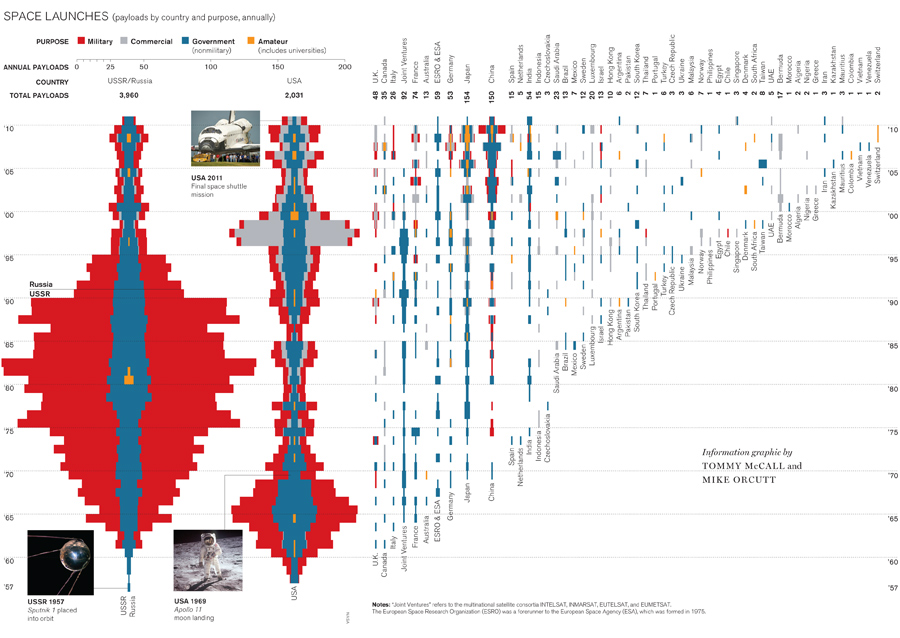Space over Time

The retirement of the space shuttles marks the end of NASA’s human spaceflight program, at least for now. But human missions funded by the U.S. government have represented only a small part of the action in space.
Of the 7,000 spacecraft that have been launched into orbit or beyond, more than half were defense satellites used for such purposes as communication, navigation, and imaging. (The Soviet Union sent up a huge number, partly because its satellites tended to be much shorter-lived than those from the United States.) In the 1970s, private companies began increasingly adding to the mix, launching satellites for telecommunications and broadcasting.
This graphic groups payloads by the nationality of the owner. A satellite, a capsule of cosmonauts, or a deep-space probe would each count as one payload. The data, which run through July 2011, were drawn from hundreds of sources, including space agency documents, academic journals, and interviews. They were compiled by Jonathan McDowell, an astrophysicist at the Harvard-Smithsonian Center for Astrophysics and author of Jonathan’s Space Report, a newsletter that tracks launches.
Information graphic by Tommy McCall and Mike Orcutt
Keep Reading
Most Popular
Large language models can do jaw-dropping things. But nobody knows exactly why.
And that's a problem. Figuring it out is one of the biggest scientific puzzles of our time and a crucial step towards controlling more powerful future models.
The problem with plug-in hybrids? Their drivers.
Plug-in hybrids are often sold as a transition to EVs, but new data from Europe shows we’re still underestimating the emissions they produce.
Google DeepMind’s new generative model makes Super Mario–like games from scratch
Genie learns how to control games by watching hours and hours of video. It could help train next-gen robots too.
How scientists traced a mysterious covid case back to six toilets
When wastewater surveillance turns into a hunt for a single infected individual, the ethics get tricky.
Stay connected
Get the latest updates from
MIT Technology Review
Discover special offers, top stories, upcoming events, and more.